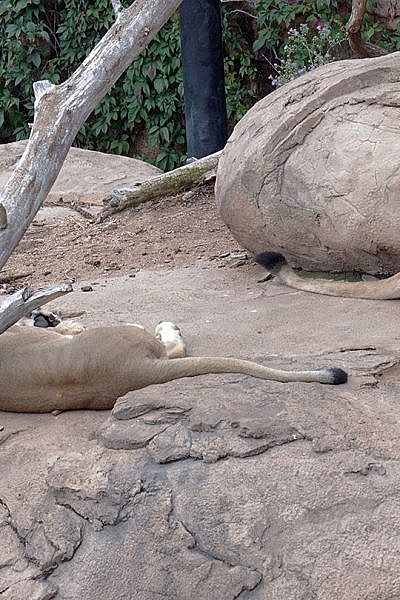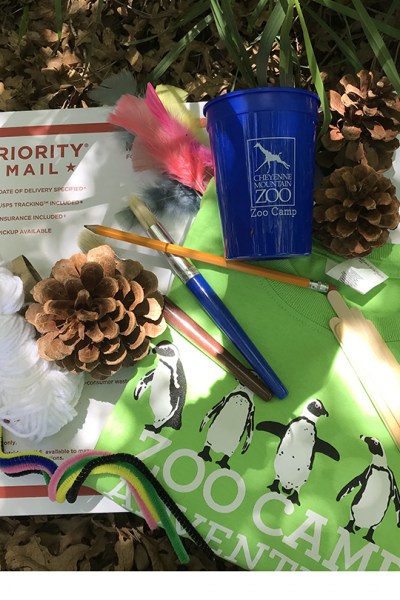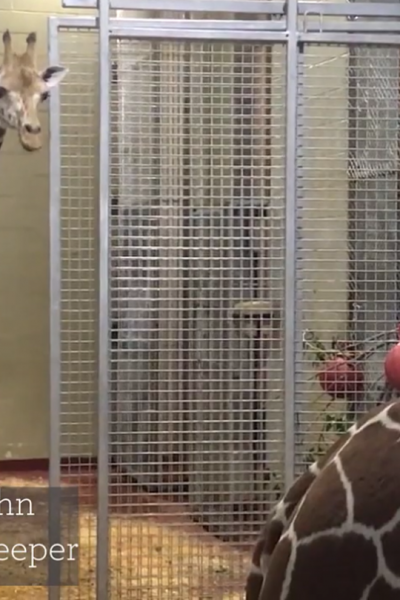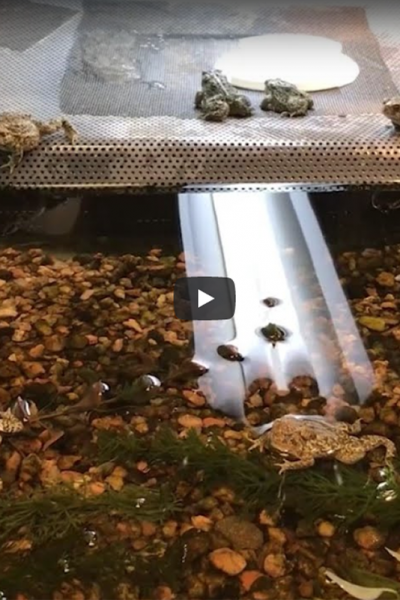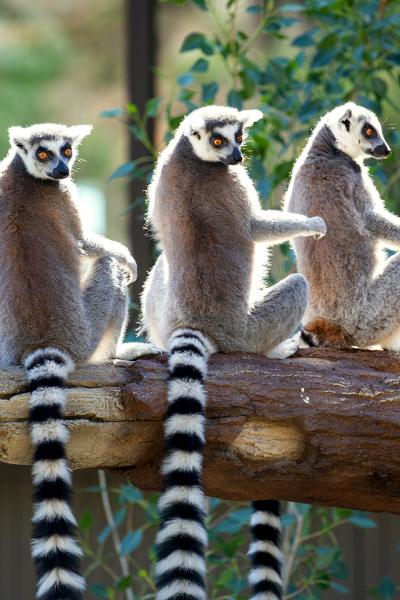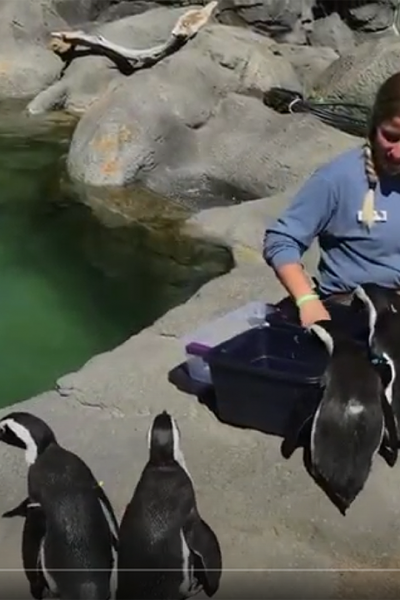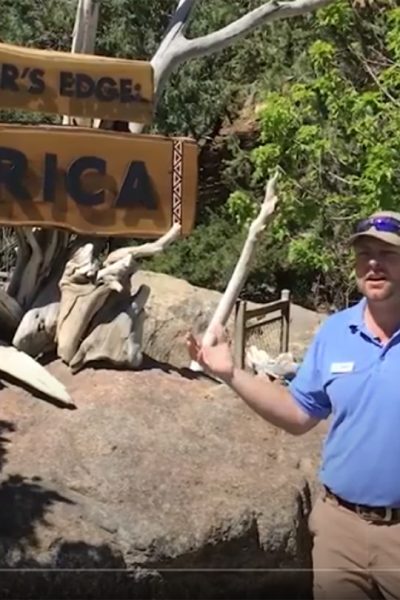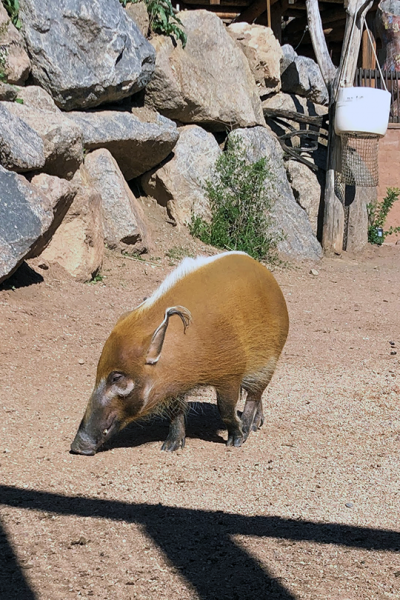CMZoo’s animal care and veterinary teams are working hard to make Zwena, a 13-year-old African lioness who was born at CMZoo in 2007, as safe and comfortable as possible as she deals with increasing mobility issues. The 13-year-old sister to Lomela and aunt to Elsa, Boma and Aslan, has been showing symptoms that her team suspects may be due to neurological disease. The formerly agile lioness is now frequently unsteady on her paws.

“At this point we have performed many diagnostic tests to determine the cause of Zwena’s symptoms and have administered a variety of medications to potentially treat ‘treatable’ diseases,” said CMZoo Head Veterinarian, Dr. Jon Romano. “Now, our goal is to keep Zwena as comfortable as possible, so she can live her best life. Her keepers are dedicated to her care. We’ll continue tracking her quality of life markers. Right now, other than her mobility, they are all looking good.”
Keepers are tracking quality-of-life markers, as they do for any animal with health conditions. Those markers help identify trends that indicate her symptoms are worsening or her life is not fulfilling her needs as a lion. Over time, the data will help her care team make any future decisions necessary. Zwena’s four markers are social dynamics within the pride, mobility, appetite and vision.
“She follows us with her eyes, eats like a champion and still has healthy respect from the pride,” said Diana Miller, African Rift Valley keeper and Zwena’s primary trainer, who has worked with her for 8 years. “So, for now, we’re focused on maintaining those indicators and avoiding any injuries as a result of her decreased mobility. I just love her so much and want to give her the best life she has left.”
Zwena, known affectionately as “Z” by many CMZoo staff members, is well-loved and respected for her no-nonsense approach to building relationships with people.
“Zwena is a brave, sassy, playful lion with one of the best animal personalities I’ve ever known,” said Miller. “She isn’t shy about telling you how she feels about you. You have to earn her respect, so it’s like a rite of passage when ‘Z’ accepts you. She seems like she’s really tough, but she’s a nurturer, too. When her sister, Lomela, had the three cubs in 2015, Zwena was the first to lead them out into the main yard to play. She loves to play and pounce, and even playfully stalks keepers and guests, despite her mobility challenges. Those interactions with guests have made her an amazing animal ambassador for her species. I mean, who could forget a 300-pound lioness focusing on you like that?”
Her care team monitors her condition daily, and makes decisions about which spaces she can safely explore. On days she’s doing well, Zwena may be in the indoor relaxation room. When her unsteadiness is worse, it’s unsafe for her to explore the main lion yard, with its potentially dangerous drops from pride rock. The indoor lion relaxation room could also present potentially unsafe scenarios for Zwena when she’s unsteady, because of the high benches that she would likely attempt to jump to and from.

When keepers see she is less coordinated, she will spend her time in the behind-the-scenes outdoor ‘maternity yard,’ which will provide ample space for her to get safe exercise, fresh air and sunshine. She’ll also have access to off-exhibit indoor spaces where she can receive enrichment, participate in training and get lots of keeper attention.
“She’s not uncomfortable or suffering, and we want to keep her that way,” said Miller. “She’s mentally there, but she will sway or stumble as she walks, even on flat ground. We have seen her leaning against walls for stability or high-stepping over non-existent obstacles. These days, she more frequently half-jumps from low platforms and then pauses to steady herself before moving on, which could mean she’s not feeling confident about her mobility. So, we’re making adjustments to protect her from those environments that are no longer safe for her to navigate.”
Zwena’s symptoms have been intermittent since about 2015, but have recently become more chronic, so her care team is making changes now.
“Socializing is really important to lions, so we’re making sure Zwena still has time with her pride,” said Miller. “She and her sister, Lomela, are best buds. Even when it’s 90 degrees outside, we see them snuggling up together. They still play together, too. It is so fun to watch. Zwena is still living a fulfilling life, but she’s doing it in different spaces.”
Zwena will spend time with each member of her pride. At night, all four of the lions will share space together, to help Zwena maintain her respected position in the pride. Zwena’s vet and animal care team will continue exploring any new options available for keeping her safe and comfortable.
